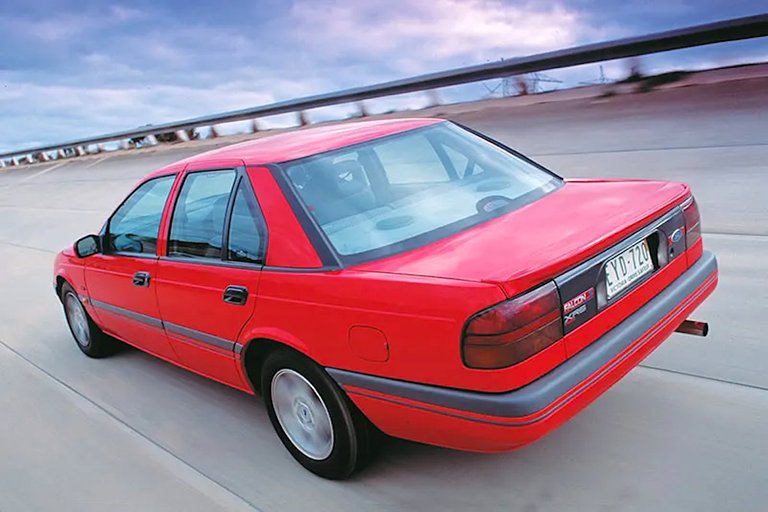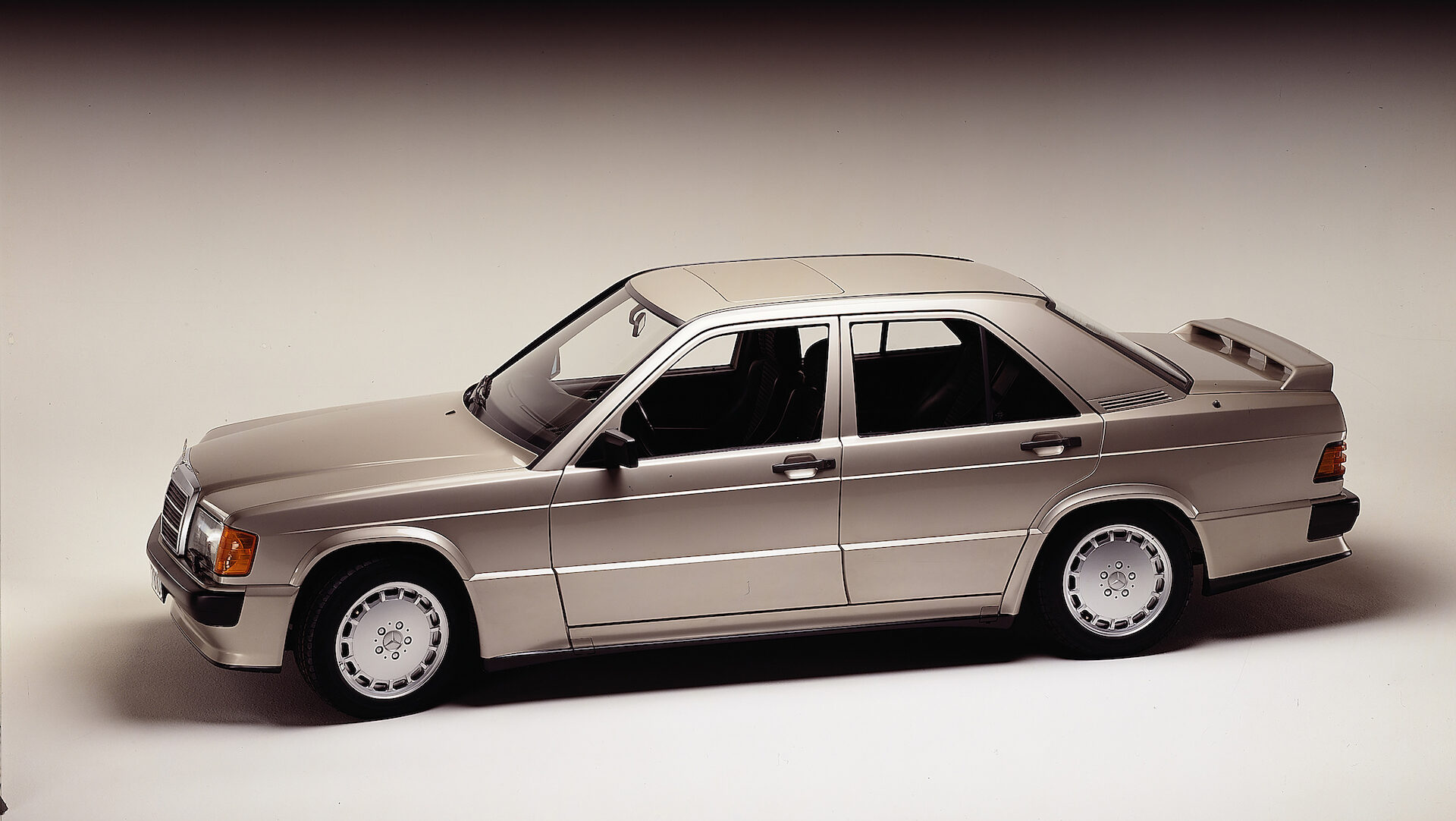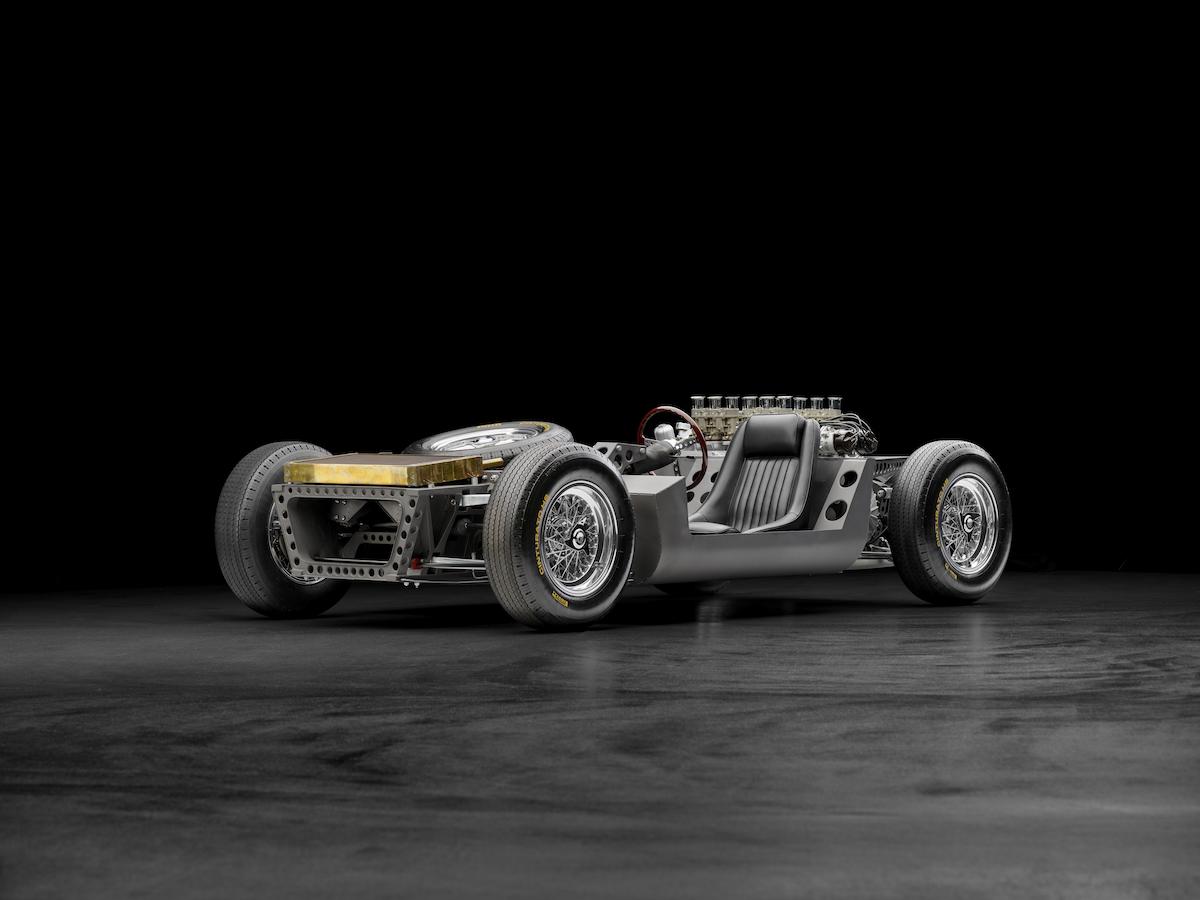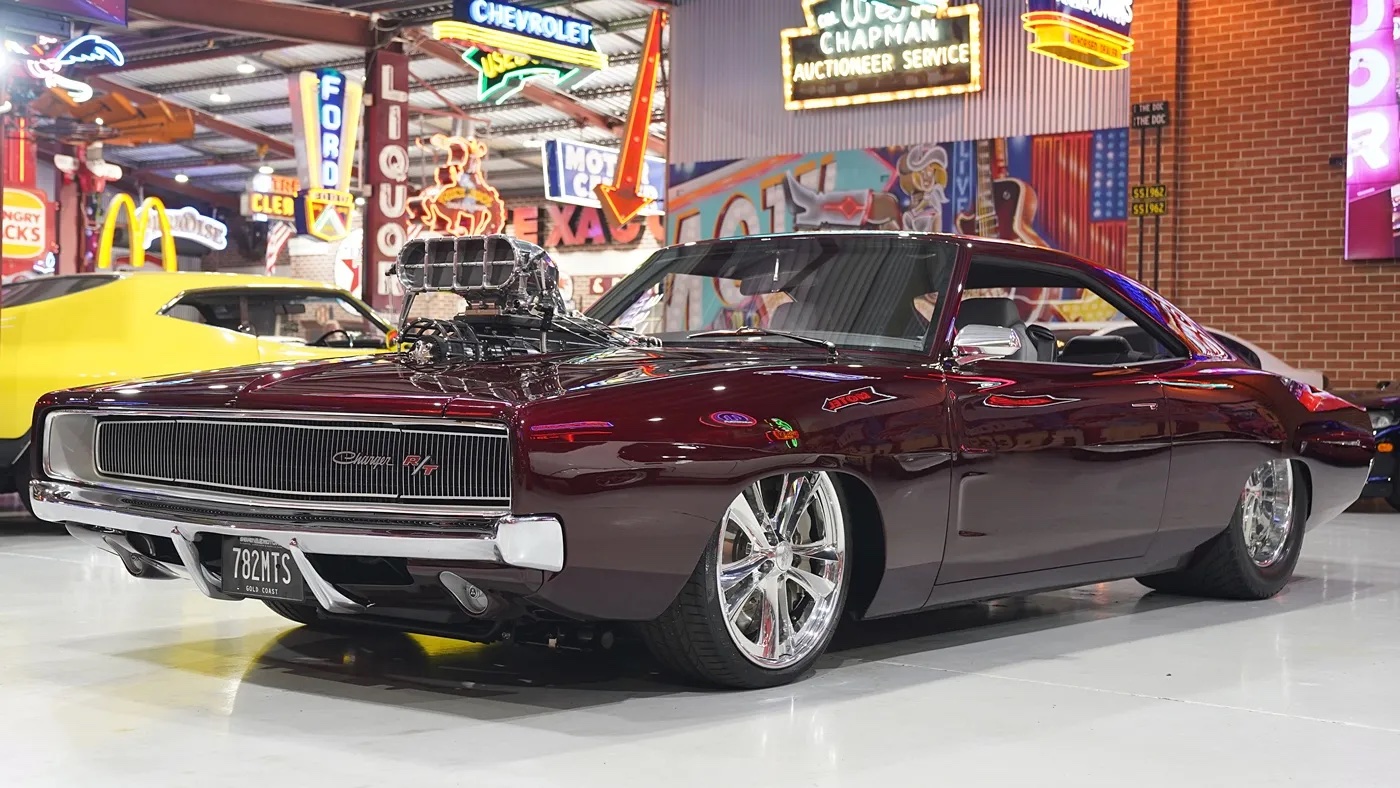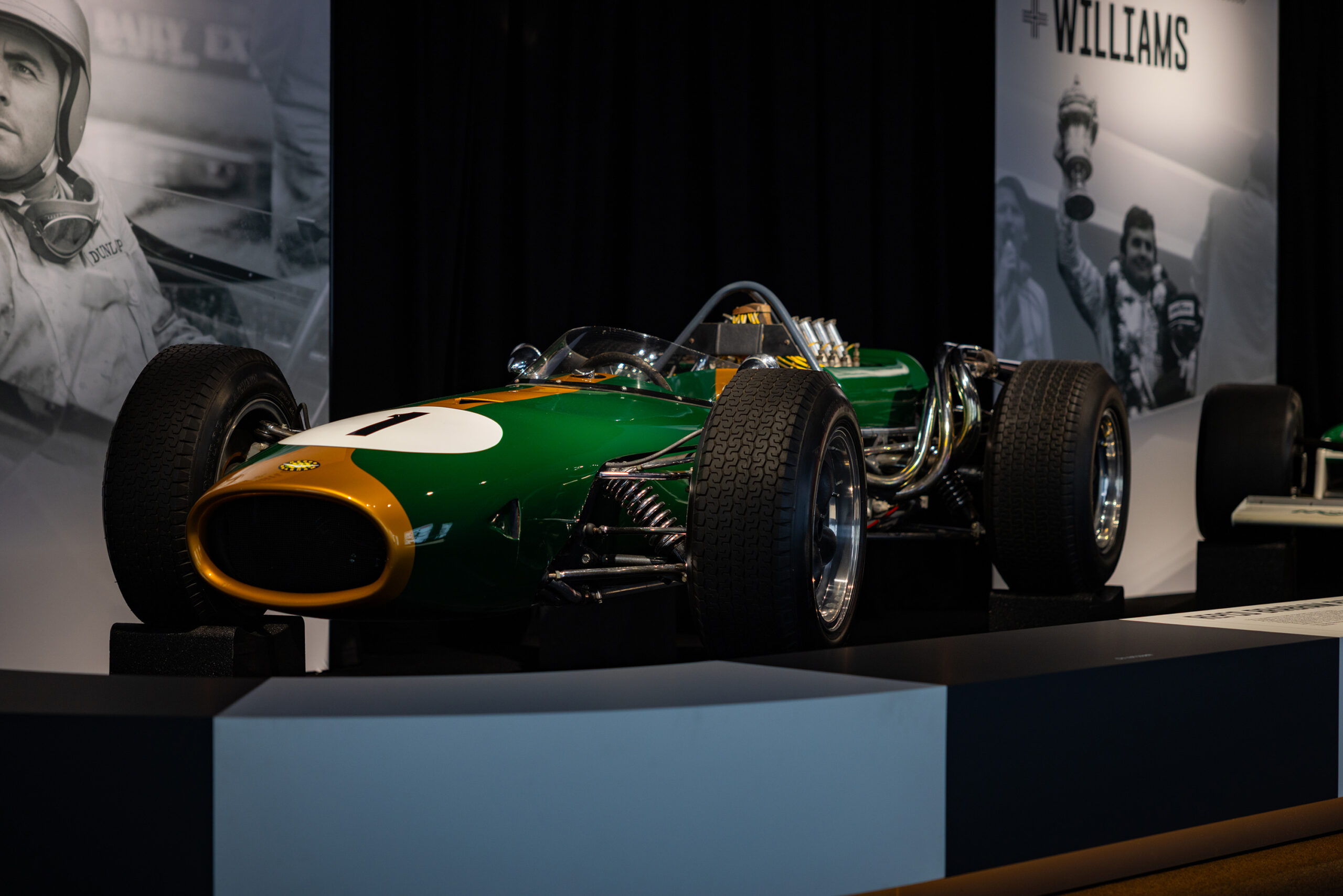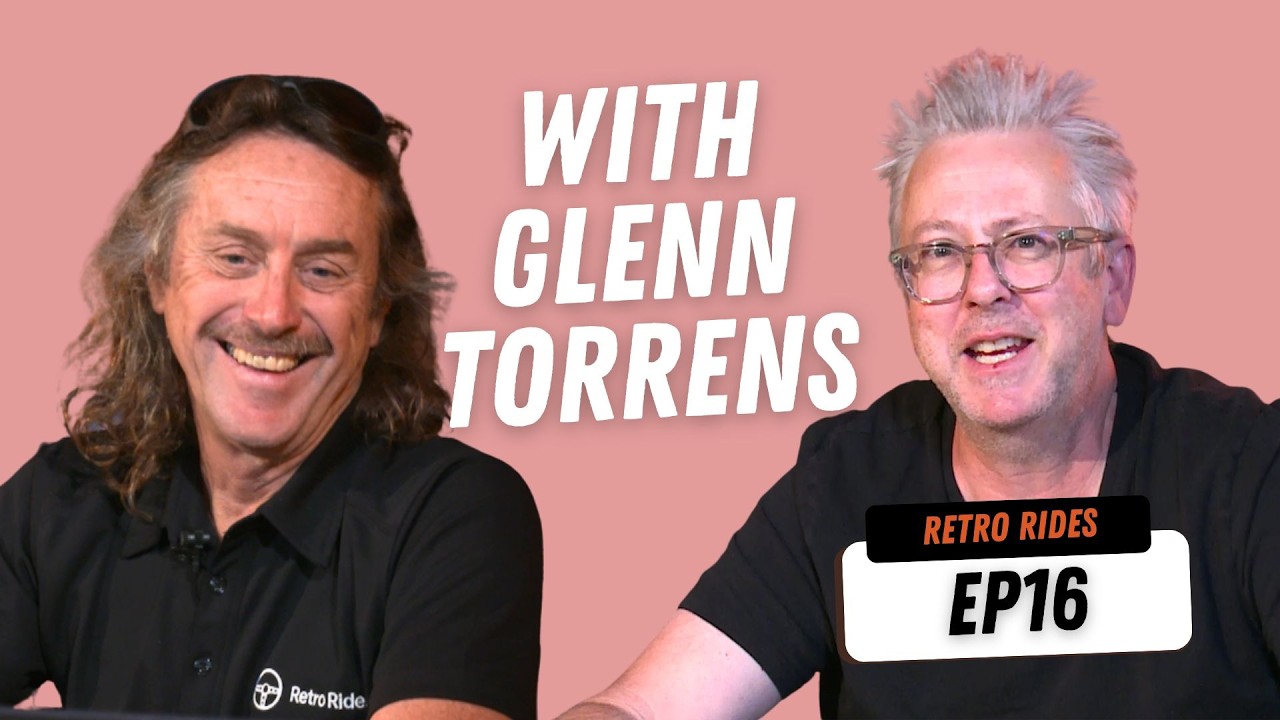While it seemed no one at the time of its launch had been asking for an Aussie performance six-cylinder car, Ford and Tickford had been quietly tinkering away on a car which would set a six-cylinder cat amongst the V8 pigeons
This is how Ford kept the fast car hits coming with the introduction of the S-XR6, a feisty six-pot that showed both Holden and Ford V8s a clean pair of heels.
While Aussies enthusiasts have long had a love a love affair with V8-powered machines, there’s always been a corner of our hearts reserved for a hot six-cylinder.
Over the years our local car makers had served up some tasty inline six-cylinder morsels, including the V8-eating and Bathurst-conquering Holden Torana GTR XU-1, the staunch race-spec triple-carby Valiant Chargers, the short-lived Nissan-turbo-powered VL Commodore, and various Falcon and Commodores with EFI engine option in the early 1980s.
But by 1991, the new V8s of Holden and Ford were once again the kings of Aussie highways and no one was really asking for another Aussie performance six.
No one, that is, outside of Ford and its Tickford Vehicle Engineering hot shop, who had been quietly tinkering away on a little project that would soon set the six-cylinder cat amongst the V8 pigeons.
The Ford Falcon S-XR6 arrived in late 1992 in the Blue Oval’s EB2 Series Falcon, and immediately set about elbowing aside both brands V8s with its ‘ooh-yeah!’ acceleration and top speed.
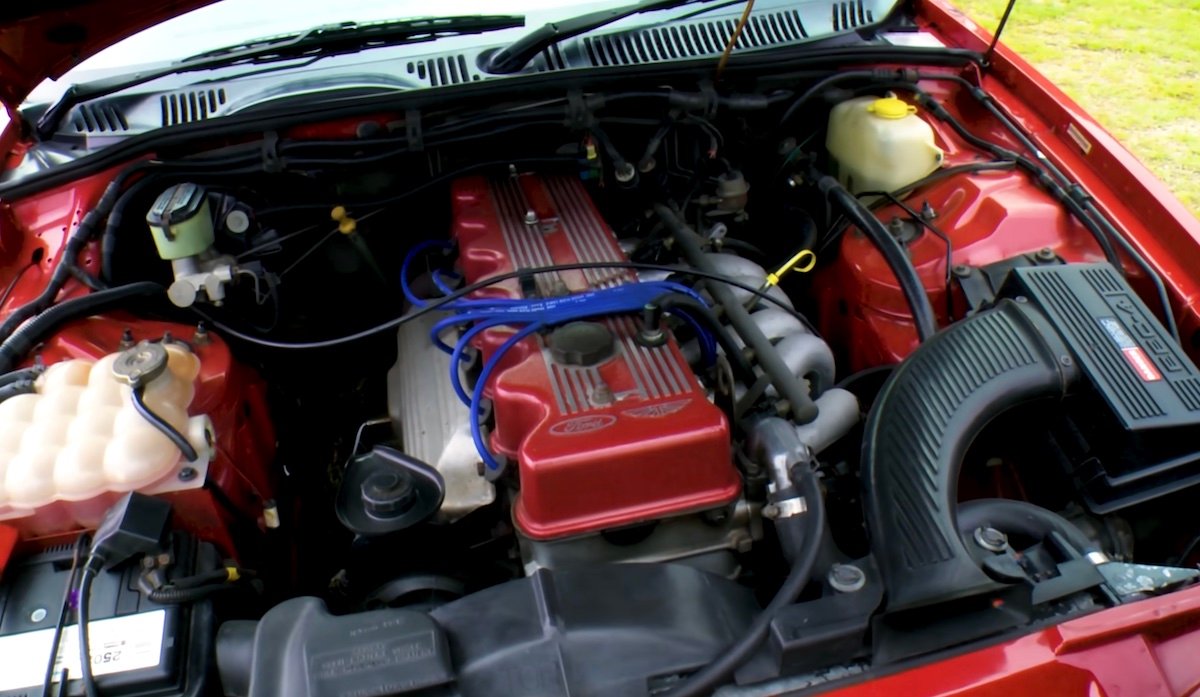
The S-XR6 featured a 4.0-litre version of Ford’s overhead-cam straight-six which had been fettled by Tickford Vehicle Engineering
The sharply priced five-seat family flier’s extra performance came from a ‘red head’ version of Ford’s OHC alloy head six. Recently revised from 3.9 to 4.0-litres and fitted as standard with multi-point fuel injection for other EB2 models, the engine in the S-XR6 was further enhanced by Tickford Vehicle Engineering using every trick in the tuner’s handbook.
The engine featured a bigger-valve head, revised cam, higher compression ratio, freer-flowing exhaust, higher fuel pressure, and a revised tune in the EECIV/EFI computer. The results lifted power from the regular Falcon’s 148kW/348Nm to a heartier 161kW/366 Nm.
Also aiding the S-XR6’s performance was a lower diff ratio – down from the 3.23:1 on the standard Falcon S to a sharper stepping 3.45:1 – causing the engine to rev faster, delivering more power and response at any given speed.
All these little changes stacked up to giant-killing performance, with the October 1992 issue of Wheels magazine proclaiming the S-XR6 not just quicker to 100km/h and over the standing 400m than its big brother the Falcon S-XR8, but also quicker than the Holden Commodore SS, and the premium 200kW HSV GTS.

The October 1992 edition of Wheels magazine proclaimed the S-XR6 to be “the quickest Aussie car you can buy!”
The six-pot was a good drive too, adopting not only the EB2 Falcon’s general improvements and upgrades, but also a specific Tickford-developed suspension package that sat the S-XR6 40mm lower, on stiffer coils and gas dampers. Premium Michelin rubber helped get the power down cleanly, while less engine weight over the front-end also endowed the S-XR6 with sweeter steering than the V8.
All in all, the S-XR6 was a terrifically well-rounded sports sedan, lifting the sporty Aussie six well beyond the class average of red stripes, alloy wheels and a boot lid spoiler.
Ford’s proper-quick six became even more distinctive with the ED series. Now renamed simply XR6, the ED debuted the now iconic quad headlamp design that remained a signature styling theme of the Falcon XR6 and XR8 until the curtain was drawn on Ford Australia production in 2016.
In the next, final instalment: Why Ford’s early 1990s Falcons make a great first-time classic… and how to avoid buying a bad one.

